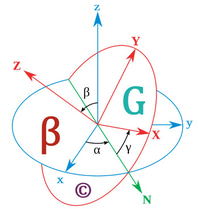Best Practices for Electrical Engineering in Sustainable Construction
Sustainable construction is no longer a niche concept—it’s a necessity in today’s world. As the construction industry strives to reduce its environmental impact, electrical engineering plays a pivotal role in ensuring that buildings are energy-efficient, environmentally friendly, and future-ready. From designing energy-efficient systems to integrating renewable energy sources, electrical engineers are at the forefront of the green building revolution.
POWER SYSTEMSELECTRICAL ENGINEERINGENERGY
Engr. Benjamin V. Gonzales Jr.
2/8/20253 min read
Best Practices for Electrical Engineering in Sustainable Construction
Sustainable construction is no longer a niche concept—it’s a necessity in today’s world. As the construction industry strives to reduce its environmental impact, electrical engineering plays a pivotal role in ensuring that buildings are energy-efficient, environmentally friendly, and future-ready. From designing energy-efficient systems to integrating renewable energy sources, electrical engineers are at the forefront of the green building revolution.
In this blog, we’ll explore the best practices for electrical engineering in sustainable construction, offering actionable insights for professionals and stakeholders in the industry.
1. Design for Energy Efficiency
The foundation of sustainable construction lies in energy efficiency. Electrical engineers must prioritize designing systems that minimize energy consumption without compromising performance. Key strategies include:
Optimizing Lighting Systems: Use LED lighting, daylight sensors, and motion detectors to reduce energy usage.
Efficient HVAC Systems: Design heating, ventilation, and air conditioning (HVAC) systems that integrate with smart controls to optimize energy use.
Energy-Efficient Appliances: Specify appliances and equipment with high energy star ratings to reduce overall power demand.
By focusing on energy efficiency during the design phase, engineers can significantly lower a building’s operational carbon footprint.
2. Incorporate Renewable Energy Sources
Integrating renewable energy sources into building designs is a cornerstone of sustainable construction. Electrical engineers should consider the following:
Solar Power: Design rooftop solar panel systems or solar carports to generate clean energy on-site.
Wind Energy: For larger projects or buildings in windy areas, small-scale wind turbines can supplement energy needs.
Geothermal Systems: Use geothermal heat pumps for heating and cooling, which are highly efficient and sustainable.
By incorporating renewables, buildings can reduce their reliance on grid electricity and lower greenhouse gas emissions.
3. Implement Smart Building Technologies
Smart building technologies are revolutionizing sustainable construction. Electrical engineers can leverage these technologies to enhance energy management and operational efficiency:
Building Automation Systems (BAS): Automate lighting, HVAC, and other systems to optimize energy use based on occupancy and time of day.
IoT Sensors: Install sensors to monitor energy consumption, temperature, and air quality in real time.
Demand Response Systems: Design systems that adjust energy usage during peak demand periods to reduce strain on the grid.
These technologies not only improve energy efficiency but also enhance occupant comfort and reduce operational costs.
4. Use Sustainable Materials and Equipment
Sustainable construction extends beyond energy systems—it also involves the materials and equipment used. Electrical engineers should:
Specify Eco-Friendly Cables and Wiring: Choose cables with low environmental impact, such as those made from recycled materials or free from hazardous substances.
Select Energy-Efficient Transformers and Switchgear: Opt for equipment with high efficiency ratings to minimize energy losses.
Prioritize Durability: Use high-quality, long-lasting components to reduce waste and the need for replacements.
By selecting sustainable materials and equipment, engineers can contribute to the overall sustainability of the project.
5. Plan for Energy Storage Solutions
Energy storage is a critical component of sustainable construction, especially for buildings that rely on renewable energy. Electrical engineers should:
Integrate Battery Storage Systems: Design systems to store excess energy generated from renewables for use during periods of low generation.
Explore Thermal Storage: Use thermal storage systems to store excess energy as heat or cold for later use in HVAC systems.
Consider Vehicle-to-Grid (V2G) Technology: For buildings with electric vehicle charging stations, V2G systems can use EV batteries as temporary energy storage.
Energy storage ensures a reliable power supply and maximizes the use of renewable energy.
6. Adopt Lifecycle Thinking
Sustainable construction requires a holistic approach that considers the entire lifecycle of a building. Electrical engineers should:
Conduct Lifecycle Assessments (LCA): Evaluate the environmental impact of electrical systems from manufacturing to disposal.
Design for Deconstruction: Create systems that can be easily disassembled and reused or recycled at the end of their lifecycle.
Plan for Future Upgrades: Design systems that can accommodate future technological advancements, such as higher-capacity renewables or advanced energy storage.
Lifecycle thinking ensures that buildings remain sustainable long after construction is complete.
7. Collaborate with Multidisciplinary Teams
Sustainable construction is a team effort. Electrical engineers must work closely with architects, mechanical engineers, and sustainability consultants to ensure that all aspects of the building align with green principles. Key collaboration practices include:
Early Involvement: Engage in the design process from the beginning to identify opportunities for energy savings and sustainability.
Integrated Design: Coordinate with other disciplines to create systems that work seamlessly together, such as integrating lighting design with architectural features.
Continuous Communication: Maintain open lines of communication to address challenges and optimize solutions throughout the project.
Collaboration ensures that sustainability goals are met without compromising functionality or aesthetics.
8. Stay Updated on Codes and Standards
The field of sustainable construction is constantly evolving, with new codes and standards being introduced regularly. Electrical engineers must:
Follow Green Building Certifications: Adhere to standards such as LEED (Leadership in Energy and Environmental Design), BREEAM (Building Research Establishment Environmental Assessment Method), and WELL Building Standard.
Comply with Local Regulations: Stay informed about local energy codes and sustainability requirements.
Embrace Emerging Technologies: Keep up with advancements in renewable energy, energy storage, and smart technologies to incorporate the latest innovations into designs.
Staying updated ensures that projects meet the highest standards of sustainability and compliance.
Conclusion
Electrical engineering is a critical driver of sustainable construction, enabling buildings to achieve energy efficiency, reduce environmental impact, and embrace renewable energy. By following these best practices—designing for energy efficiency, integrating renewables, leveraging smart technologies, and collaborating with multidisciplinary teams—electrical engineers can lead the way in creating a greener, more sustainable built environment.
As the demand for sustainable construction grows, electrical engineers have a unique opportunity to shape the future of the industry. By prioritizing sustainability in every project, they can contribute to a healthier planet while delivering innovative, high-performance solutions.





